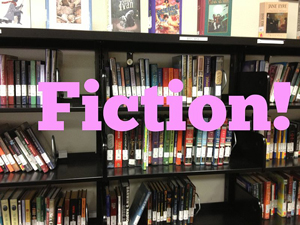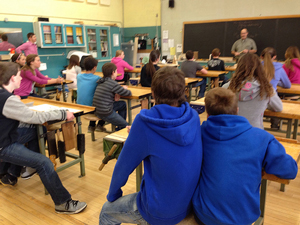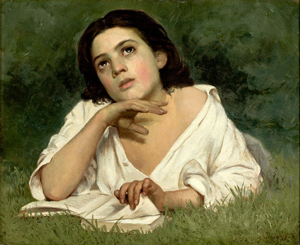
Source: Fiction, SEMSLibraryLady, Wikimedia
So how does a character’s way of thinking, feeling, and acting in the story alter what takes place in the story? In most stories, plot and character are two sides of the same coin, so to speak. Plot shapes character. Character shapes plot. That is, one affects the other. When you think about it, this is not surprising. This is, after all, the way people’s lives work in the real world. Who people are is intimately linked to what they choose to think, feel, and do in the world. Things in their lives change. They evolve, which in turn causes them to make choices that drive further changes. Literature reflects real human life with its ups and downs and its challenges and triumphs, and authors choose to mirror life’s realities in their fictional stories.
Most fictional stories occur on two levels: the external and the internal. Again, this is not news to you because the same most likely applies to your own life.

Source: Science/Wood Shop Class, Heather Durnin, Flickr
External action
Let’s say you are in school, sitting in science class. The girl next to you passes you a note, but before you can reach out to grab it, the teacher tells her to bring the note to the front of the room. She jerks her hand back but not before the teacher catches her. This is an example of external response: She tries to hand you a note in the middle of class and jerks her hand back when she realizes that the teacher might see her passing the note. External responses help drive a story’s plot by adding actions and events to the story.
Internal responses

Source: Almeida Júnior - Moça com Livro, Jose Ferraz Almeida Junior, Wikimedia
External response is all about plot, the events that take place that characters react to. Internal response is more about characters and their thoughts about those events that occur in the story. To illustrate a character’s internal response, take that same scenario, but this time imagine that it is a scene in a fictional story. In the story, the author not only shares the actions but also includes a window into the girl’s thoughts and feelings. By describing the character’s inner thoughts and feelings, the author helps the reader understand why she does what she does.
 Now, imagine that you are the author writing this story. Use your notes to write a short paragraph describing why the girl in the story tries to pass the note in the middle of class. Remember, like many authors, you can draw on your own experiences to help you describe the character’s inner thoughts and feelings that lead up to the external response that she chooses to take. Include anything that you think might help the reader understand the girl’s motivation for doing what she did. When you are finished, check your understanding to see a sample response.
Now, imagine that you are the author writing this story. Use your notes to write a short paragraph describing why the girl in the story tries to pass the note in the middle of class. Remember, like many authors, you can draw on your own experiences to help you describe the character’s inner thoughts and feelings that lead up to the external response that she chooses to take. Include anything that you think might help the reader understand the girl’s motivation for doing what she did. When you are finished, check your understanding to see a sample response. Kendra is very smart but can’t seem to concentrate on her schoolwork. She is shy, and she is new in school and is desperate to make friends. The last school she attended—when her family had to move because her dad lost his job again—left her with a bad taste in her mouth because she was an outsider the whole time she was there. The note she is passing in science class is an attempt to make friends. The teacher doesn’t know that and just thinks she’s not paying attention, so when the teacher asks her to bring to the note to the front of the class, it really embarrasses Kendra.
A useful way to look at how plot and character intertwine in a story is seeing the what of the plot—what is happening—in terms of the why of the characters—why the characters respond the way they do. Remember, just as in real life, characters in literary fiction may have more than one motivating factor for responding to an event. Also, as in real life, some things just happen even without a character’s input. Below is a table showing some possibilities of plot and character coming together in our sample story about the girl in science class.
| What happens (plot and external response) | Why it happens (character’s internal response) |
|---|---|
| The girl passes a note to another student. | The girl is motivated to pass a note because she feels lonely and frightened. |
| The girl jerks her hand back when the teacher sees her. | The student is shy and doesn’t want to get into trouble. |
| The teacher catches the girl in the act of passing the note. | |
| The teacher asks her to bring the note to the front of the room. | The teacher thinks the girl isn’t paying attention. |